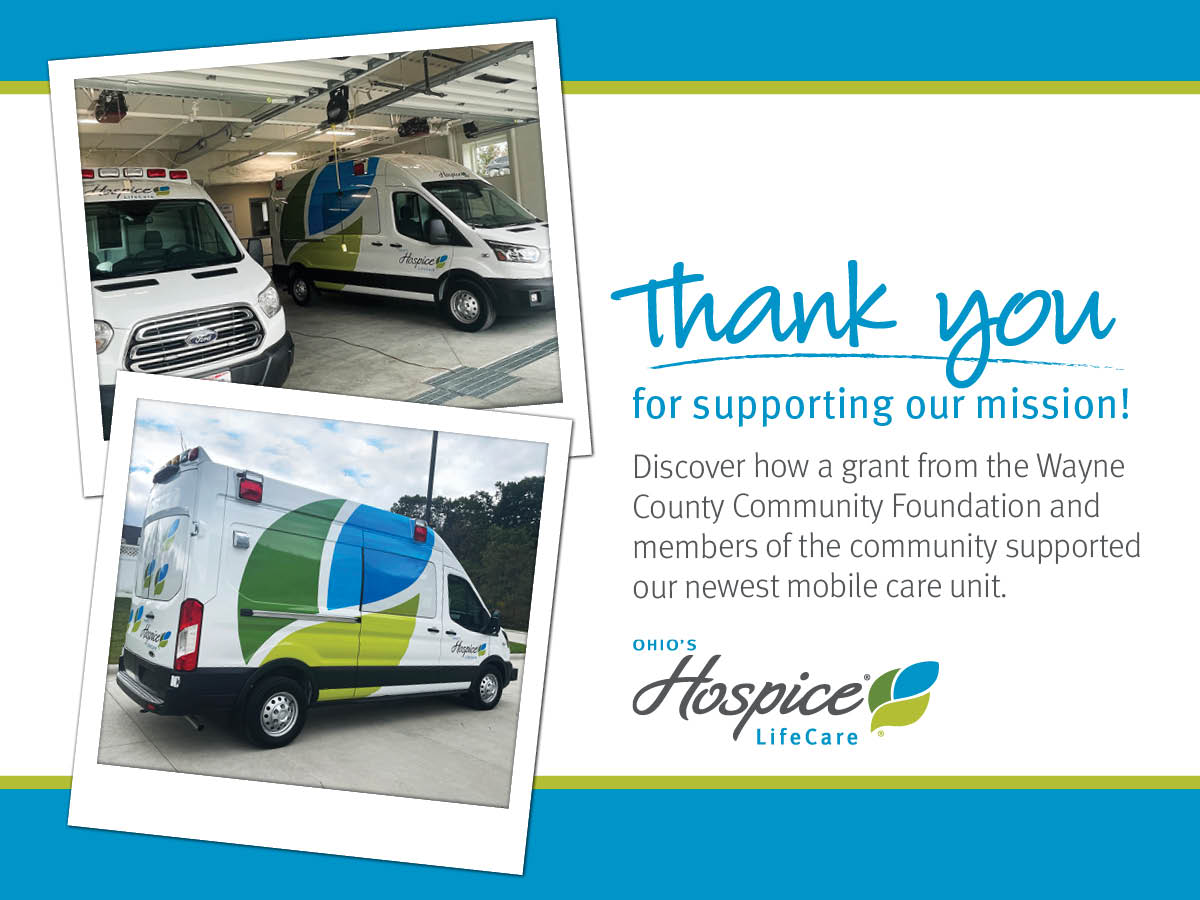Wayne County Community Foundation Helping to Improve Quality of Life for Ohio’s Hospice LifeCare Patients
Thanks to the generosity of the Wayne County Community Foundation and members of the community, Ohio’s Hospice LifeCare has added a new mobile care unit to its transportation fleet. The new mobile care unit will help the local not-for-profit hospice provider continue to improve the quality of life and speed to care for its patients. After the new mobile care unit is outfitted and licensed, it will begin serving the community in the next few months.

“When your loved one has been diagnosed with a life-limiting illness or injury, reliable and far-reaching transportation services can make a big difference in their quality of life,” said Kurt Holmes, executive director of Ohio’s Hospice LifeCare. “Through our mobile care units and transportation services, we can provide transport for our patients from the hospital to our hospice inpatient care center, from the care center to a patient’s home, and from a patient’s home to a nursing facility.”
The Wayne County Community Foundation awarded Ohio’s Hospice LifeCare a $100,000 grant from the John Kaylor Memorial Fund and anonymous community funds.
The Wayne County Community Foundation is a nonprofit 501(c)(3) community organization that works to strengthen the community by helping donors make a lasting difference with their philanthropic endeavors — connecting their dreams and passions with causes that matter.
“We thank the Wayne County Community Foundation for this grant. We’re grateful to them and other donors throughout the community who support our mission,” Holmes said. “Their support of our mission has made it possible for us to add this mobile care unit to our transportation fleet. Our mobile care units are equipped with everything a patient may need for comfort, safety and ease during transport.”
The new mobile care unit is the second Type II ambulance in the Ohio’s Hospice LifeCare transportation fleet. The fleet also includes a MobilityWorks wheelchair van, which is used for patients who don’t want to be transported on a full stretcher.
In the past, Ohio’s Hospice LifeCare relied on independent ambulette and mobile care service providers to transport patients. However, across the nation, local emergency medical services (EMS) operations have found it increasingly difficult to staff ambulances.
When your loved one has been diagnosed with a life-limiting illness or injury, reliable and far-reaching transportation services can make a big difference in their quality of life.
– Kurt Holmes, executive director of Ohio’s Hospice LifeCare
“Our hospice patients were experiencing long wait times because ambulance crews were being called to other non-hospice cases. The average wait time for an ambulance is 20 minutes,” Holmes said. “So, we created our own mobile care unit transportation service with a crew of emergency medical technicians to ensure our patients receive the responsive transport they need in a timely fashion.”
By having its own mobile care unit transportation service, Ohio’s Hospice LifeCare can provide transportation 12 hours per day, seven days per week, saving an average of $80 per trip compared with rates the organization paid to other ambulance services.
“Our mobile care unit transportation service program has been successful in reaching a core patient need for timely, safe and professional transport,” Holmes said. “In addition to transporting patients to doctor’s appointments and providing transportation from our facility to wherever they reside, our transportation service has been a key element of giving patients access to the world. With our mobile care units, we have transported patients to ballgames, parks, ponds for fishing, and family events that they would not have been able to attend. By offering this service, we are providing our patients with a better quality of life.”

